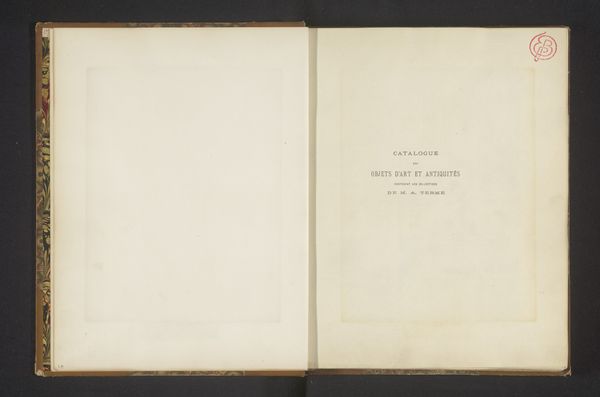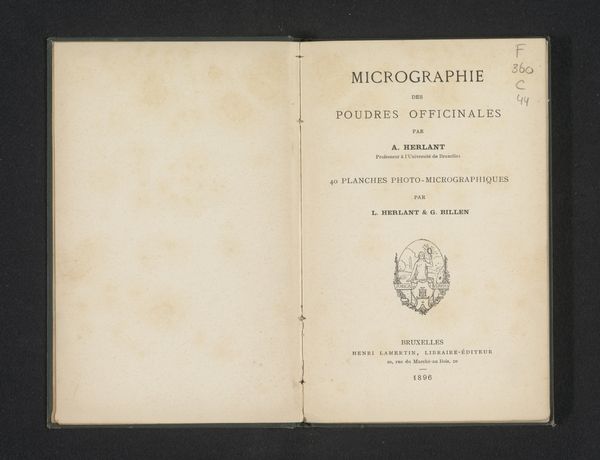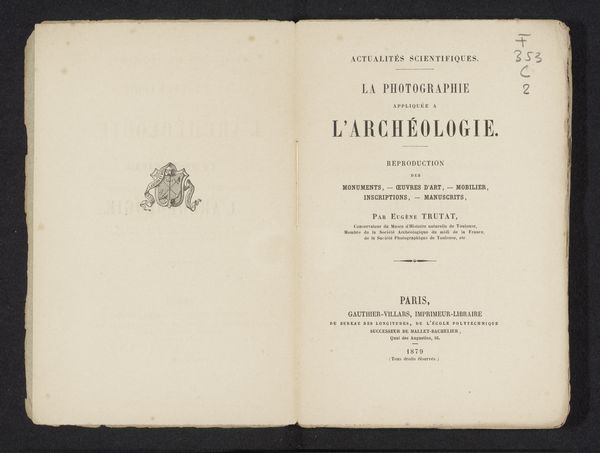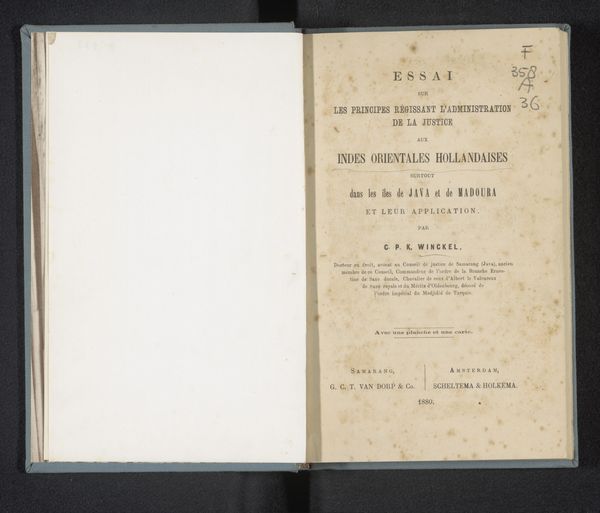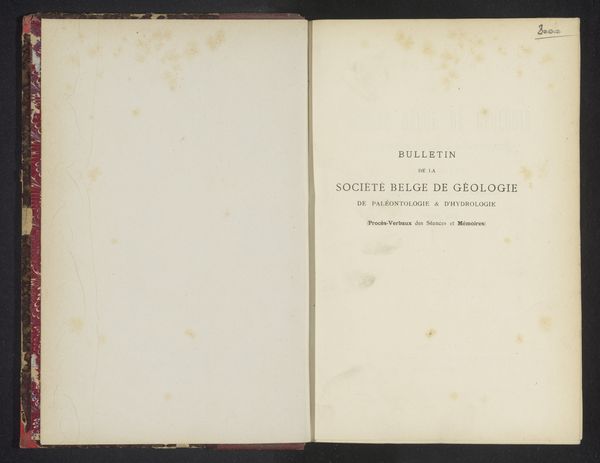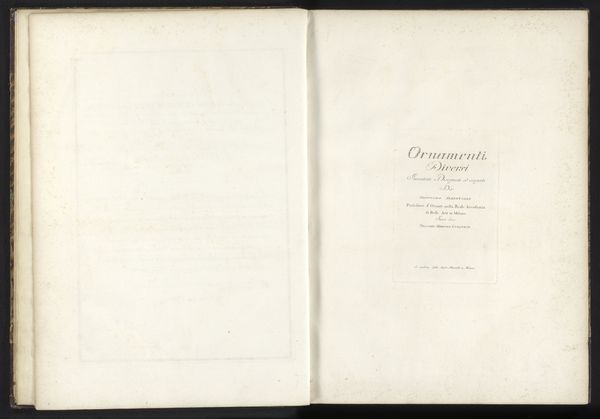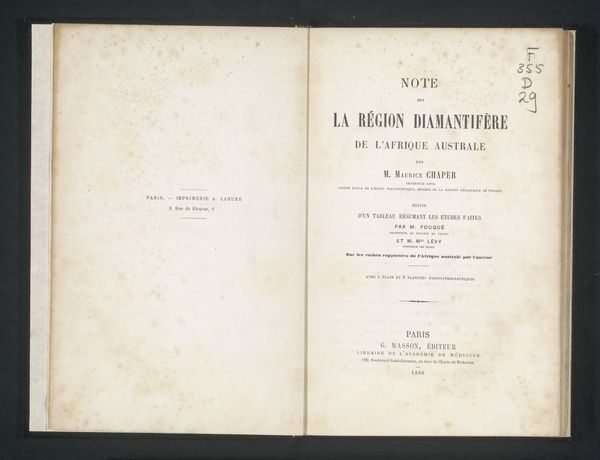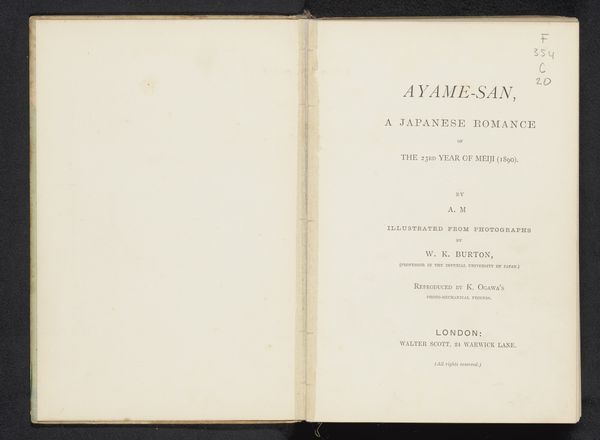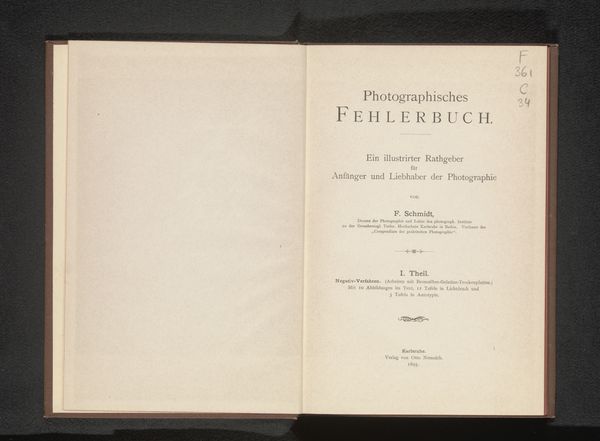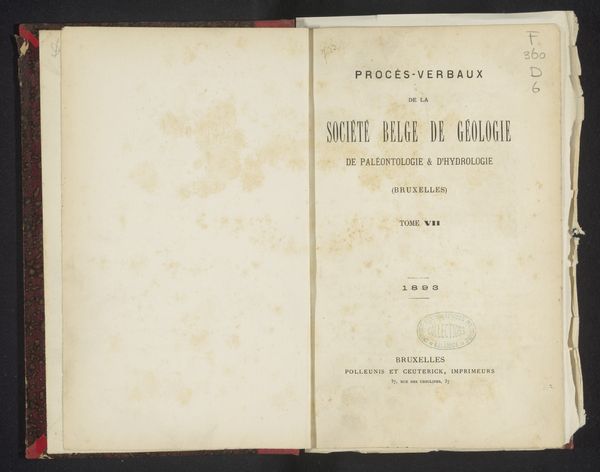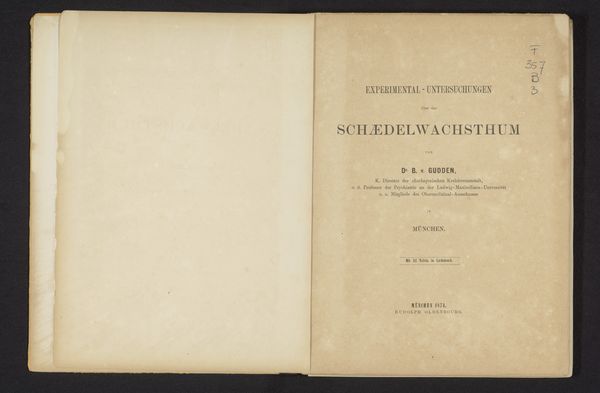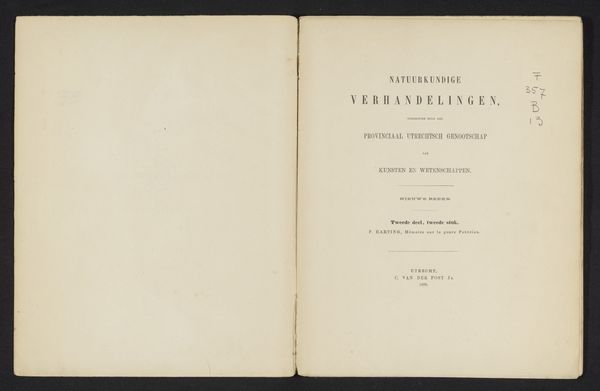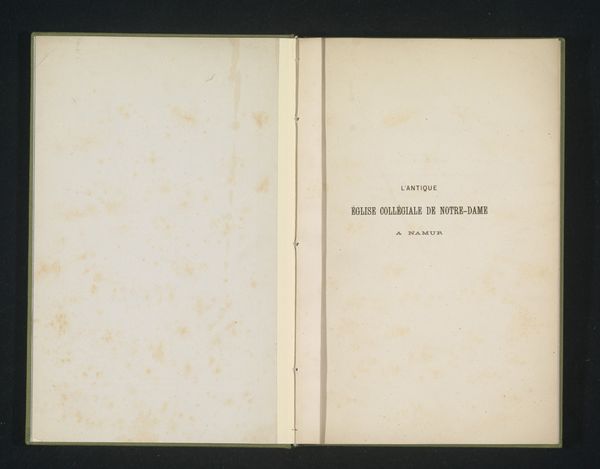
print, photography
#
portrait
# print
#
photography
Dimensions: height 562 mm, width 412 mm, thickness 65 mm
Copyright: Rijks Museum: Open Domain
Editor: Here we have “Oeuvre de Paul Delaroche,” published in 1858. It seems to be a photographic print of a book. It looks quite old; the paper is discolored and stained. What's particularly interesting to you about this piece? Curator: This piece really speaks to the evolving relationship between art, reproduction, and access in the mid-19th century. We see photography being used here to reproduce and disseminate the works of a well-known artist, Paul Delaroche. What sociopolitical factors might have motivated the production of such a book? Editor: Well, it seems like photography democratized art, making it available to a wider audience beyond the elite who could afford original paintings. Curator: Precisely. Think about the rise of the middle class and their growing desire for cultural capital. This book isn't just about documenting Delaroche’s *oeuvre*; it's about asserting a certain cultural power, right? What about the politics of portraiture implicit in such endeavors? Whose stories get told, and who gets left out? Editor: So it’s less about the individual artist and more about the system of art and power around them? Curator: Exactly. And how photographic reproduction altered perceptions of originality and authorship. The act of photographing a painter's body of work turns the work into an accessible archive, yes. But it also makes me consider, as you observed initially, how it removes materiality from view – or obscures and flattens it through technological mediations of photographic re-production and, then, reproduction once more in digital platforms like the present one. Editor: That’s given me a lot to think about. I came in just seeing an old book, but it sounds like this represents a critical shift in how art was valued and disseminated. Curator: Indeed! Hopefully, that reflection illuminates some complex tensions informing art and society during the mid-19th century.
Comments
No comments
Be the first to comment and join the conversation on the ultimate creative platform.
